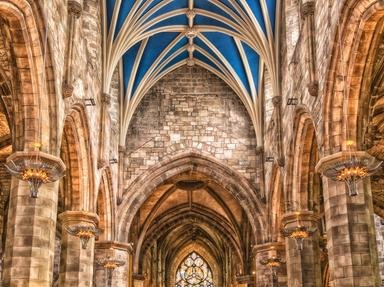Quiz Answer Key and Fun Facts
1. To which warrior, king and saint is the Lutheran Church of Norway cathedral of Trondheim dedicated?
2. The small city of Armagh situated in the northern Irish county of the same name possesses two cathedrals. What is unusual about these two buildings?
3. This cathedral in north eastern England is considered to be the largest example of Norman and Gothic architecture in Europe. Dedicated as the Cathedral Church of Christ, Blessed Mary the Virgin and St Cuthbert, which city's skyline does this cathedral dominate?
4. This building is known within the Anglican Church as The Collegiate Church of St Peter, but the rest of the world are more familiar with it as ____ Abbey?
5. We find ourselves standing in front of a huge gothic edifice. Towering over this ancient northern German city, this Roman Catholic cathedral is dedicated as the High Cathedral of Saints Peter and Mary. In which German city are we?
6. For many centuries this building has enhanced the skyline of the northern Italian city of Florence; of which type of ecclesiastical building is the one known across the world as the 'Duomo'?
7. The event which occured here in 1517 changed the religious map of Europe, and possibly the world, forever. What was famously nailed to the door of the Schlosskirche, Wittenberg in the German State of Saxony-Anhalt?
8. The correct and full title of the building that we know as 'Sagrada Familia' is the Basilica and Expiatory Church of the Holy Family.
9. A French heroine who later became the nation's patron saint was burned at the stake in the square in front of the impressive Cathedral of Our Lady. To which city in Normandy has our journey brought us?
10. This Anglican edifice is one of only three in the United Kingdom to possess three towers. It is also the only cathedral to be found in the county of Cornwall. In which city is the Cathedral of the Blessed Virgin Mary located?
Source: Author
SisterSeagull
This quiz was reviewed by FunTrivia editor
Bruyere before going online.
Any errors found in FunTrivia content are routinely corrected through our feedback system.

